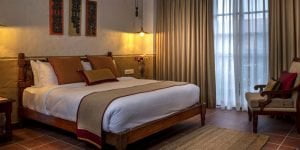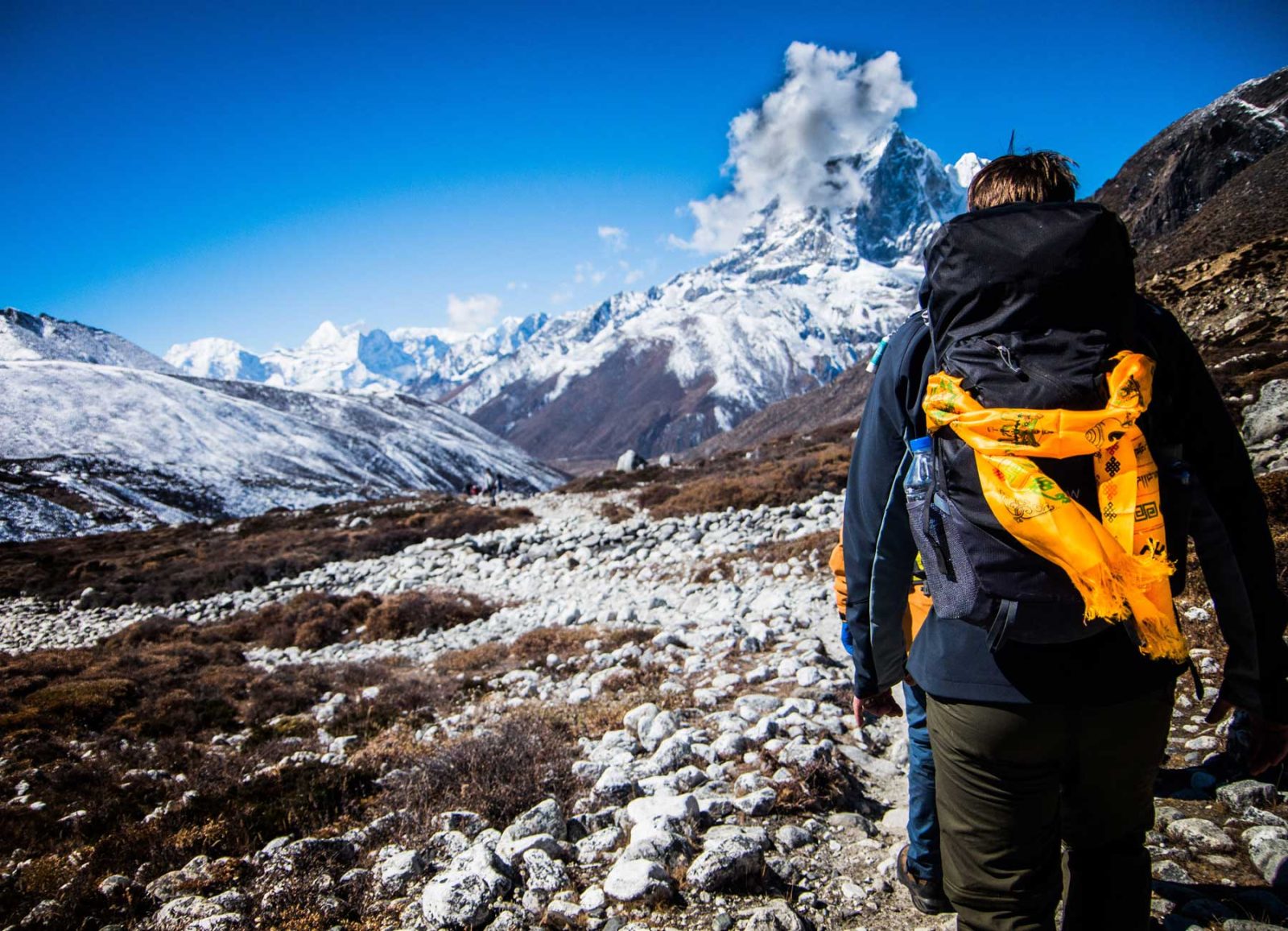Island Peak Nepal
20 Days 4500/span> ex Kathmandu
Accommodation
3 Nights Hotel Stay
4 Nights Tent
12 Nights Tea House

Transportation
Mostly on foot
Transfers and domestic flights included
1 Porter 1 Trekker Policy

Included Meals
19 Breakfasts
16 Lunches
18 Dinners
All Open Menu Your Choice
Trip Grade
Category 4
Extreme Expedition – Cold
After a 60 to 70 degree 100m section to the summit of Island Peak, you are blessed by one of the most spectacular views on Earth. The names just roll off the tongue: Nuptse, Lhotse, Lhotse Shar, Makalu, Baruntse and Amadablam.
It has taken you over 2 weeks of hiking and months of training to get here. And while there were moments you thought you wouldn’t make it (that crevasse on the glacier below, the one you are going to have to cross again on your way back down, certainly made you question your sanity), you are here now, doing something you have thought about for years and something few ever undertake to do.
Now you have done it and your life story has just become that much more colourful.
“I feel that the training provided at base camp was great for getting to know the equipment and how to use it. Having a ladder set up so we knew how to walk over the crevasses was fantastic and made it very easy to use when on the mountain (the ladders over crevasses were actually my favourite part of the climb).”
Kaithlyn, Canada
Of the 60 guests we had in our last season, 55 reached the summit of Island Peak. That is a great record in anyone’s book and we would like to thank our ground team for looking after everyone so well! Well done!
Island Peak 6,160 meters, was first climbed by a British expedition that included Tenzing Norgay. Eric Shipton’s party named the peak in 1953, as it resembled an island in a sea of ice. The peak is part of the south ridge of Lhotse and linked to the semicircle of cliffs that rise to the north of the summit of Nuptse. Our adventure begins with a short flight to Lukia and two days of easy walking to Namche bazaar. En-route to Base Camp our trail takes us through the Sherpa Villages and into the high valleys of the Khumbu region, providing magnificent views of Everest and the satellite peaks.
Island Peak is a substantial undertaking, which demands hard work and commitment. However, standing on top of this Himalayan summit is a reward that you will cherish for a lifetime.
We know this may be your first time to try mountaineering so we have included most of your climbing equipment. All personal and group climbing gear including the LA SPORTIVA climbing boot, EXPED mattress, sleeping bag, down jacket ete; are supplied so there is no need bring or invest in expensive gear for just one trip.
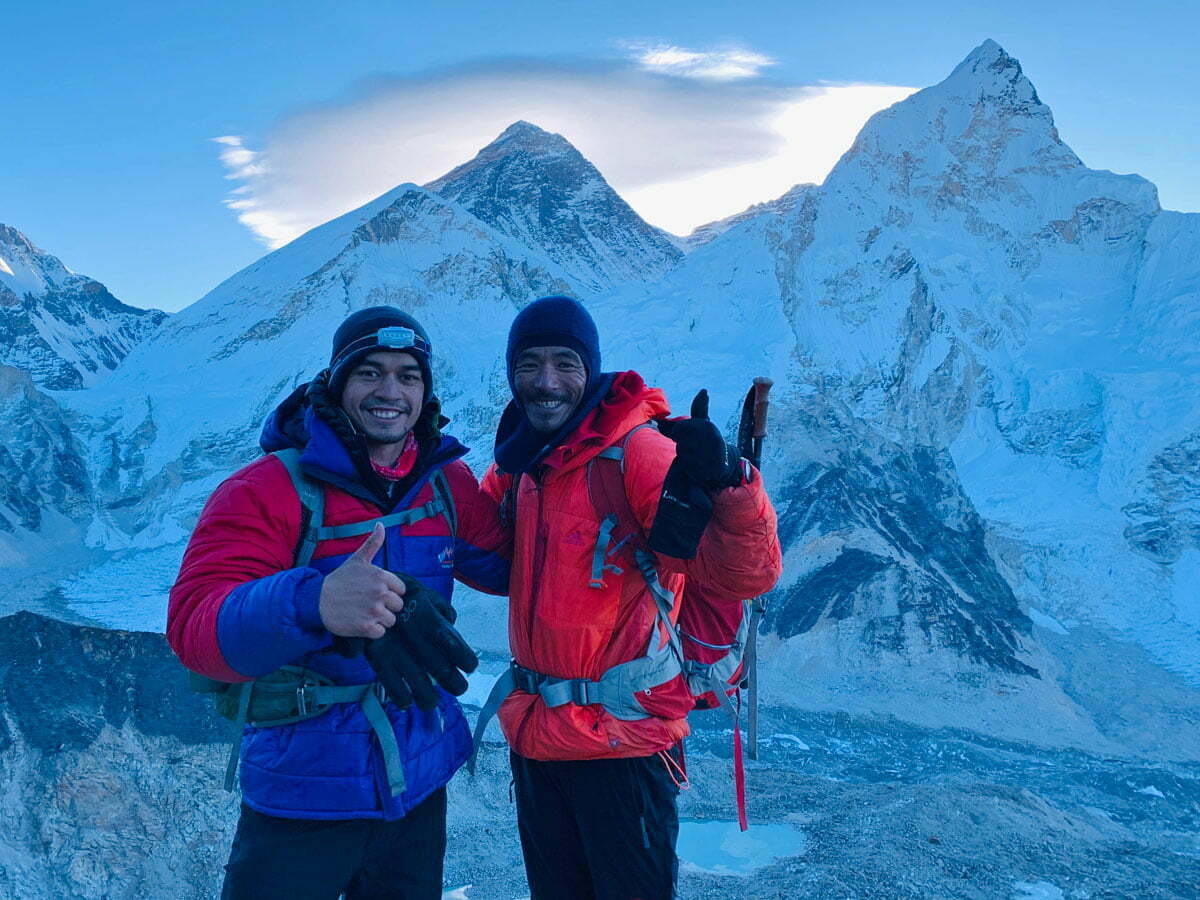
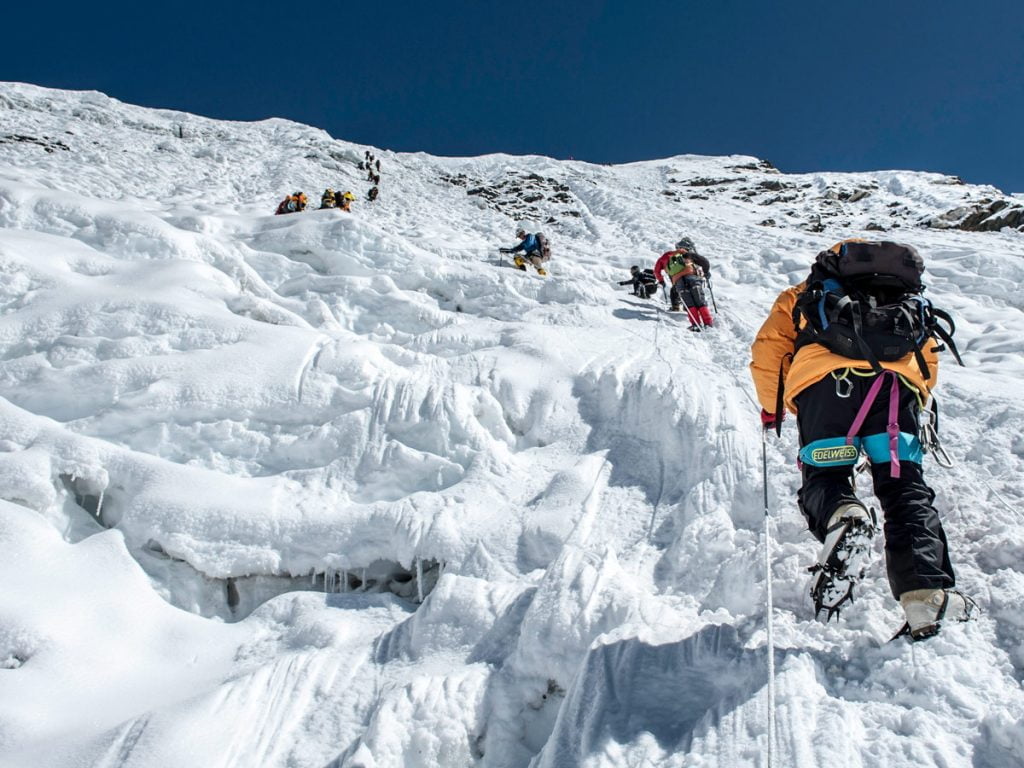
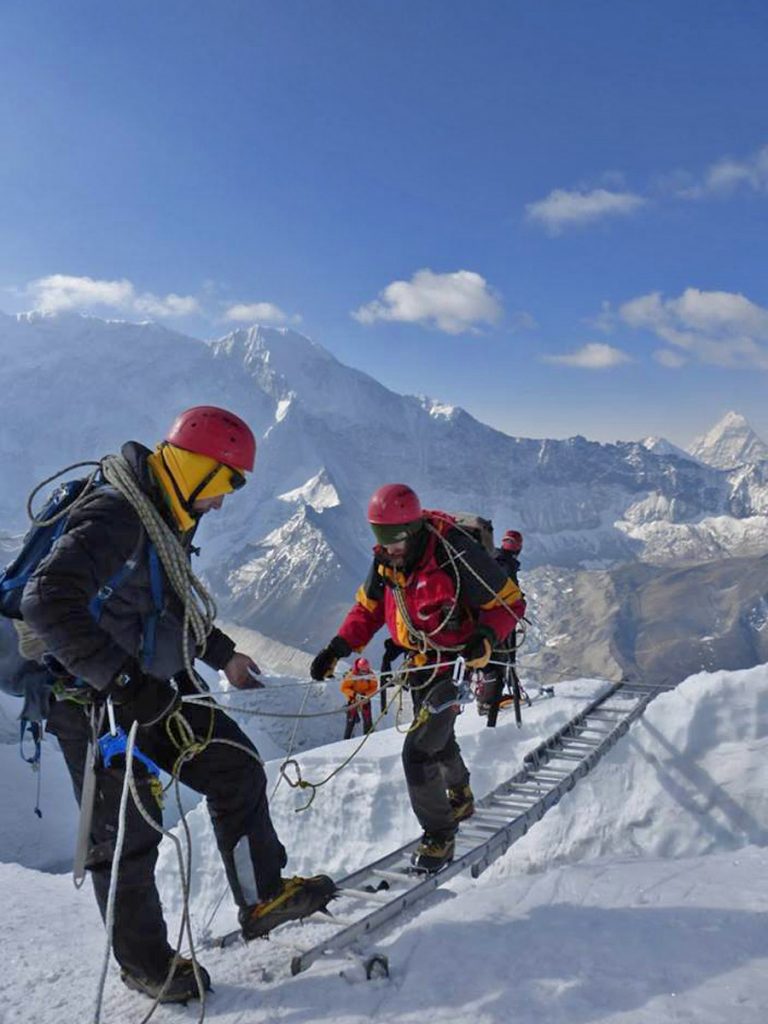

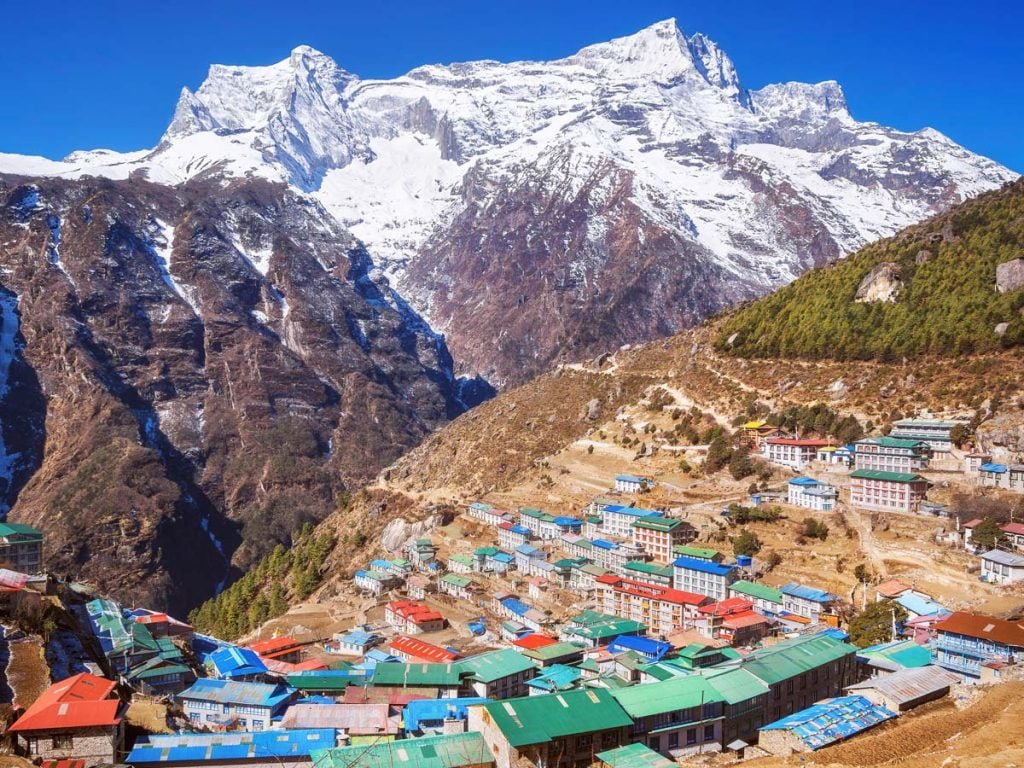
The Journey
Your group leader will meet you at the airport and take you to your hotel where you can relax, meet your teammates and take a stroll through Kathmandu’s bustling streets. We’ll enjoy a traditional Nepali dinner together and watch a cultural performance before getting much needed rest. (D)
Visit some of Kathmandu’s most noteworthy sights, including the white dome of Boudhanath and UNESCO’s Pasupatinath. You will learn about Nepal’s religious diversity while seeing ancient religious practices firsthand. At night, we’ll discuss the itinerary for our trek and what to expect in the days leading to Everest Base Camp.
The short, steep Lukla airport is one for the books. After landing, we’ll make our way through farming communities and Sherpa villages before seeing our first views of the Dudh Koshi River. Since today’s walk will be an easy one, you can comfortably take in the landscape and valley views. Over dinner at our Phakding teahouse, your guide will prepare you for tomorrow’s journey.
Namche is what postcards are made of! To get there, we’ll cross suspension bridges passing over rushing rivers and framing snow-capped peaks. Your trekking team will be sure to wake you with ample time to enjoy the day. We’ll pass several mountain villages before we enjoy a hot lunch in Jorsale. Our bellies will be full as we continue to adjust to the altitude of Sagarmatha National Park to witness our first views of Mount Everest.
Wake early to see golden mountain peaks and sip tea before we stroll to a local Tibetan-Buddhist center. Today our focus is rest and acclimatizing in preparation for climbing at higher altitude. We may even do a hike up to one of the nearby ridges, which will afford us amazing views of the mountains and improve our acclimatisation.
Here, our itinerary diverges from most. We’ll skip the overcrowded traditional trails to explore the lower section of the Gokyo valley. It will take us about six hours to walk the ridge of Mong-La, and we may encounter musk deer along our way. The terraced village of Phortse will reward our efforts and keep us warm for the night.
Words can’t do justice to today’s trek. Be sure your camera is ready! Mountains will surround us and, if we’re lucky, a musk deer will cross our path to Pangbuche and Somare. We’ll have lunch in the shadows of Amadablam, and peaks that were previously hidden will slowly reveal themselves as we trek further into the Himalayas.
After breakfast, our group will go for a morning excursion to help us acclimatize further and take in the stunning 360-degree mountain views. Our destination is a hilltop where we will see a bird’s eye view of Imja valley and the village of Dingboche below. The world’s fifth highest mountain, Makalu, will also frame our photos.
Gradually we will make the ascent above the tree line and reach a wide meadow. Cholatse, Lobuche and Pumari mountains contrast this new landscape. “Sherpa’s Graveyard,” the area in which memorials have been built to honor those lives lost in this region is a sobering moment. We will rest at this landmark before continuing onto Louche, a settlement built at the foot of Lobuche Mountain.
It will take us three hours to reach Gorak Shep from Lobuche. It’s a rocky, snowy terrain, and we’ll stop for lunch before setting out for Everest Base Camp. At Base Camp, we see the icy-blue Khumbu Ice Fall and prayer flags and tents from current and past excursions. This is a moment you’ll remember for life.
Though the sunrise trek to Kalapathar is a difficult one, the sunrise view is worth it. This is the highest we will reach on our trek together. At the top, dreamy Himalayan peaks will turn purple and gold in the morning sun. We’ll celebrate before beginning our descent to Dingboche.
We will head up across an arid glacial plane toward the southern slopes of Island Peak. Passing through Chukung, we will reach our base camp site which is set up for the entire climbing season. There we will have a hearty meal, meet our climbing team, who will introduce us to the equipment and further acclimatise.
Today will be spent practicing with all the equipment needed for the climb to Island Peak. You will achieve a basic knowledge of how to climb and how to use the equipment. Our team is more than eager to help you with any questions and techniques.
We will head out for the summit before sunrise. While the first section is relatively flat we will soon hit a steep climb up to the summit glacier. Here we will rope up and traverse the glacier and several crevasses. Once we reach the base of the south summit, we will ascend using ropes and Jumar as the ascent is on a 45 degree angle. This is the last obstacle before we reach the summit.
From the summit of Island Peak we have a 360 degree view of the Solu Khumbu mountain range. 8000 meter peaks surround us. This is an epic and unbelievable experience.
From the summit we head back to base camp to rest and refuel.
We have incorporated a spare day into our trip just in case the weather is unfavourable on our summit day.
Its time to head home and we do this via Pangboche.
We return to an old friend today, Namche Bazaar and all its little cafes and side street. It’s wonderful to be back here for a possible hot shower as well.
Our last day of trekking will take us back to where the journey in these mountains began, Lukla. Tonight we will celebrate with our porter and guide team our wonderful adventure to the summit of Island Peak.
Our short flight will take us back to Kathmandu.
Say goodbye or “Pheri Betaula” to new friends and get ready to edit many photos on your departure flight. Your leader will be there to wish you well on your journey home.
Includes
- Arrival and Departure transfers on both domestic and international flights.
- 3 nights accommodation at Harati Manor Hotel twin share
- OPEN and CHOICE of Full board meals while on expedition.
- One Trekker: One Porter Policy
- Accommodation at clean and comfortable tea houses or lodges.
- Welcome dinner with the cultural program as listed in the itinerary.
- Half-day guided city tour with world heritage entrance permit as listed in the itinerary.
- All Domestic flights and airport tax.
- Private transportation to and from the starting and ending points of the trek as applicable.
- Professional local experienced Trek Leader well trained in Wilderness First Aid with his support crew.
- Experienced Climbing guide with all his allowance and expenses.
- Trekking cook and other support staff while at Island Peak base camp
- Porters to carry all personal gear and group equipment with proper insurance and required gear
- Supplementary Oxygen cylinder regulator or Gamow Bag (A life-saving device in case of Acute Mountain Sickness) along with the comprehensive First Aid Kit.
- All required Personal and Group Climbing gear: LA SPORTIVA climbing boot, EXPED down-filled mattress, Black Diamond crampons, ice axe, Jumar, harness, the figure of eight, Carabiner, climbing Helmet and rope, etc.
- We provide all camping gear including – tents for members, dining tents with tables and backrest chairs, Kitchen tents with utensils, staff, porter, and toilet tents on the whole trip.
- Expedition Gear – sleeping bag, fleece inner liner, down jacket, rain poncho, etc for use during the trip.
- Island Peak climbing expeditions Permit Royalty of US$ 250 only per person and other government tax.
- Climbing Clinic Course at base camp.
- Complimentary Trek Duffle bag, and trip map
- Island Peak climbing certificates issued from the respective body of the Nepal Government for the successful climbers
- Trekking or VDC entry permit, Everest National park entry fees, etc
Excludes
- International flights
- Insurance
- Tips and beverages
Journey Extensions and Upgrades
Check out our Journey Extensions or Add Ons for those that want to stay a little longer or try something different along the way.
In the heart of Thamel, is the Nepali Ghar Hotel. The Nepali Ghar punctuates the new trend of modern hotels and breezes an ode to Nepalese traditional styles. These traditions afford a warm and homely environment for all adventurers. The hotels Delux rooms are luxurious and open with excellent facilities. The hotel has a restaurant that serves great food as well as a fitness centre.
If you would like to stay at the Nepali Ghar Hotel as part of your package of 2 nights before and 1 night after an expedition the extra price will be $600 (for all 3 nights).
For twin rooms where you share the room, the price is $350 per person twin share.
In the heart of Thamel, is the Nepali Ghar Hotel. The Nepali Ghar punctuates the new trend of modern hotels and breezes an ode to Nepalese traditional styles. These traditions afford a warm and homely environment for all adventurers. The hotel’s Delux rooms are luxurious and open with excellent facilities. The hotel has a restaurant that serves great food as well as a fitness centre.
If you would like to stay at the Nepali Ghar Hotel as part of your package of 2 nights before and 1 night after an expedition the extra price will be $350 per person twin share (for all 3 nights).
For single rooms for these nights the extra price is $600.
If you would like to have your own room in Kathmandu we can organise this. The Single Supplement for all Everest Trips is $300 per person. Single rooms are not available outside of Kathmandu.
“The greater the difficulty, the more glory in surmounting it. Skillful pilots gain their reputation from storms and tempests.”
Epictetus – Greece
Trek responsibly with trained porters and guides
Our team are committed to making sure your journey is a safe and memorable one. Each guest is paired with one porter (we have a 1 Porter 1 Trekker policy) to ensure a comfortable trek, and all of our guides receive medical and mountaineering training to make sure your experience is pleasant. We provide safety equipment and bring necessary medical supplies on each trip.
Prepare for an adventure of a lifetime
Before we begin our trek, our team will review our itinerary to Lukla and answer your questions about what to expect in the days leading to Island Peak. We’ll spend several nights adjusting to the altitude before making our way further up the valley toward Everest Base Camp before heading toward our ultimate goal, Island Peak. Our guide and porter team will be with you all the way, monitoring your progress and ensuring you are travelling safely. Be prepared to take things slowly. There is no rush in the mountains. And the slower we go the better acclimatised we will be. The same goes at Island Peak base camp. Our team is there to support you, answer your questions and teach you how to climb the mountain safely. Be open to new cultures and new skills and know we are there to help you achieve your goal.
We get asked a lot of questions about our Island Peak climb. The following are certainly the most common however if you have another question please let us know or the answer may be found in our Trip Notes section.
How hard is the climb to Island Peak?
The climb to the summit of Island Peak is a serious undertaking. While you do not need to have had any climbing experience, you will need to be fit and you will need to be able to handle heights. Several sections crossing the glacier on Island Peak present crevasses that can be unnerving for some climbers. It can also be very cold with some summit attempts well below 0 degrees Celcius. Acclimatisation should be ok as we have several acclimatisation days along the way, but even still, the altitude will hamper normal progress.
We do suggest people who wish to undertake this climb, should have been to an altitude of 5000 meters or higher before, so that they understand the impact this can have on your body.
What about insurance what do I need?
This is one of the most common questions we get. Many insurance policies have activity limits as well as altitude limits. So on top of your general travel insurance that will cover you for the trek to and from the mountain, you will need specialist insurance to cover you for your activities on the mountain.
Global Rescue offers travel insurance without any restrictions on activities, elevation, places travelled, or nationality of its members. Contact them directly for a Travel Insurance Quote that will cover you for climbing. Click here to go to the Global Insurance website for a quote.
Do I have to bring my own climbing equipment?
Of course, if you have your own gear then we encourage you to bring it. However, Island Peak is usually for those wishing to try climbing for the first time and we understand that purchasing all the equipment is an expensive undertaking.
So we provide the following: a very warm sleeping bag with warm fleece liners and feather duvet jackets which are the mother of all warm clothing. We also provide you with an individual waterproof trek Duffle bag to fit all your gear in.
For climbing we provide La Sportiva climbing boots, Black Diamond crampons, ice axe, ice bar, ice screw, Jumar, harness, the figure of eight, safety Helmet, plain and locking Carabiners, prussic cord and new climbing rope, etc.
We also provide Mountain Hardware 2 member tent, Exped down-filled mattress, and solar lights with a device charging facility. We use solar energy at Island peak base camp.
Note: While this is not always the case, climbing boots that are hired such as our La Sportiva can at times cause blisters, as your foot has not had a chance to adapt to the boots idiosyncracies.
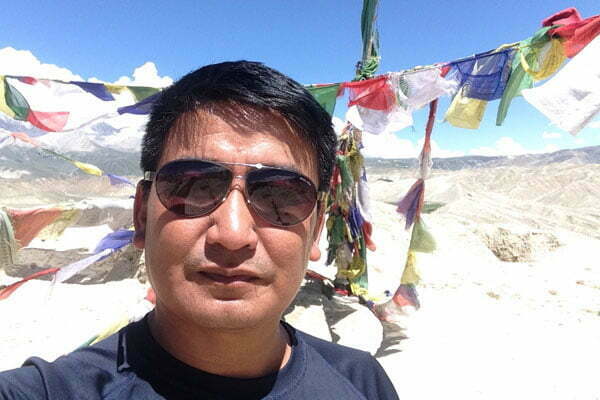
Island Peak is the perfect mountain to try your possible new mountaineering hobby on. At over 6000 meters it is a big mountain and it has just enough technical challenges to keep you on your toes and to learn on. The views of course are unbelievable but it is the entire journey that makes our Island Peak trip wonderful.
Pradip
Nepal Ops Manager


